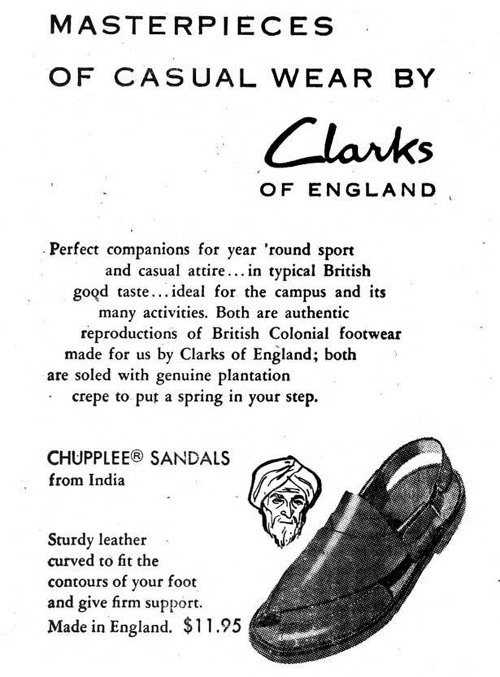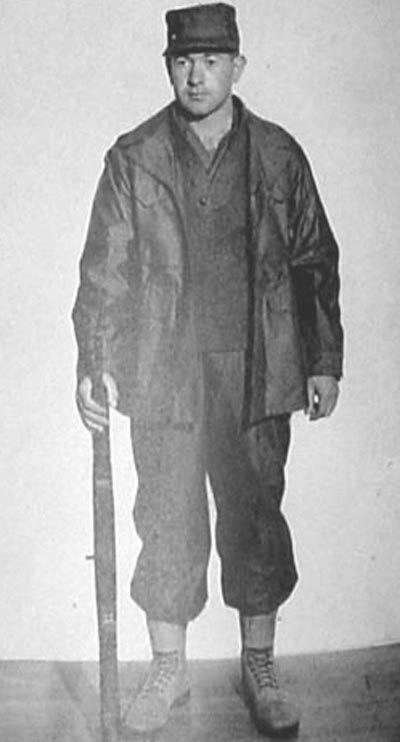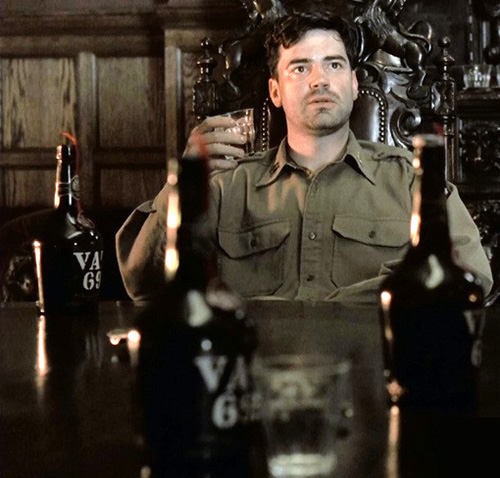Nathan Clark (see photo below) was a British officer in the Royal Army Service Corps stationed in Burma during World War Two. Before leaving for overseas service, his brother, Bancroft Clark, asked him to keep his eyes open for any interesting footwear designs that might be of use to their family’s company, C. & J. Clark LTD, while he was in the military. The Desert Boot (and the Chupplee sandal) was the result of this, albeit years later.

Nathan’s inspiration for his future “desert boot” was discovered while serving in Burma, where he noticed officers who had previously served with the Eighth Army in North Africa were wearing suede chukka-style boots that had been custom-made for them in the Cairo, Egypt, bazaar. Nathan sent sketches and rough patterns back to his brother, but no samples were made until Nathan was discharged and returned home after the war and made them himself.
The rather conservative company’s review board reacted negatively to Nathan’s concept shoe, believing it wouldn’t sell. However, while at the National Shoe Fair in Chicago, Illinois, in 1949, Nathan showed his creation to Oskar Schoefler, the fashion editor at Esquire Magazine. According to company lore, Schoefler was so enamored with the shoe that he wrote a feature on it in the magazine, complete with color photographs, in early 1950 [NOTE: I have been unable to find the article in Esquire]. Because of this, the boot became very popular in the US, but wasn’t available in the UK until years later.
What we know as “The Desert Boot” was a form of footwear roughly based on the South African veldschoen style of footwear (a.k.a. “vellies”), and the initial shoes or boots made in Cairo were for South African officers serving in the region.
There are extant photos of Long Range Desert Group (LRDG) soldiers wearing short suede boots and shoes that appear to be “desert boot” in style and construction (see image below, of the man on the left).

Want a pair? Of course, Clark’s Desert Boots are the obvious choice if one wants to obtain a pair of these excellent shoes (there are two versions, one of which is made in Italy and is around $200; the other is made in Vietnam and is around $130). They are no longer made in England, by the way, as supply couldn’t keep up with demand.
If price is an object, I found that American Eagle Outfitters desert chukka boots are an excellent alternative. They seem to be very well constructed (made in India), but have more of an “open lacing” style to the vamp, and they are sized prior to the insole being installed so they will likely be tight unless you go a size up or remove the insole. There are likely other great brands (one can be sure that Ralph Lauren and Nigel Cabourn have made some beautiful but expensive versions) but you’ll have to discover those on your own.
For more information:
https://clarksoriginals.com/the-clarks-desert-boot-made-in-england
https://www.clarksusa.com/c/Desert-Boot/p/26110054
http://tweedlandthegentlemansclub.blogspot.com/2014/11/the-return-of-desert-boots.html
https://www.gentlemansgazette.com/is-it-worth-it-clarks-boots
REFERENCES:


/arc-anglerfish-arc2-prod-mco.s3.amazonaws.com/public/MNHVLS7OYNAE3I35HR6QLKL65Q.jpg)




